It’s been a long hot, sweaty summer; it seems like years since it’s been cool…
After three months of constant heat and sweaty clothes, we say goodbye…to a somewhat difficult time, including many significant events (of the natural kind). During this time, most days topped 35C (all days at least 32C), with most nights staying above 26C. The most recent of the events have been particularly hard and the after effects are still being dealt with. The train to Kansai has resumed as of this week, while international flights will not fully recommence until this Friday (21/9).
The issues up in Hokkaido are much worse, with the electricity generators which were knocked out (most of them) only now gradually coming back on line. Apparently there have been over 500,000 accommodation cancellations in Hokkaido, and it appears that cancellations have occurred in other areas around Japan, although not to the same extent. Certainly, there seem to be less tourists in Kyoto at the moment.
Since my last post, we have been out and about a lot more, both because it is somewhat cooler and, thankfully, my toe is now back to it’s old self, ie pain free. We have seen some of the damage that was done by the typhoon/cyclone and it is quite visible everywhere we go. A lot of old houses, mostly those that are unoccupied, have sustained significant damage, and many buildings with tiled roofs have incurred varying amounts of damage. In addition, many trees have literally snapped in half.
Two buildings near our home, which had been slightly damaged by both the earthquake and the previous typhoon have partially collapsed, and should now be completely demolished. Who is going to do this is another question. We’re not sure if the house down the road was occupied, or not, but it is still full of personal items, such as clothing, with some of it spread down the slope at the back of the house. It looks rather like the house has vomited!
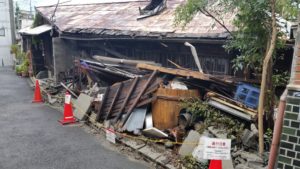
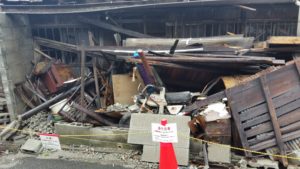
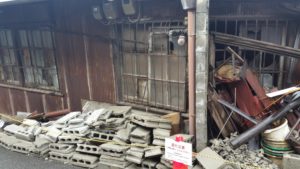
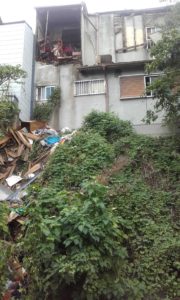
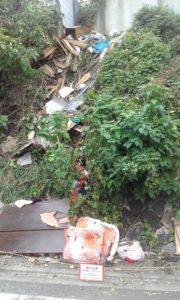
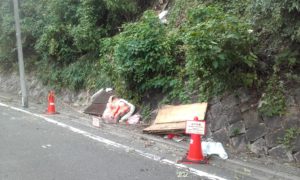
Our main outings during the period covered by this post were going to the craft market which we had been to before, as a follow up (in much cooler weather) and to see the macaque monkeys at Arashiyama.
The craft market is held on the 15th of every month in all weather, according to the official website, which we checked before we left home because it was a rainy day. When we arrived at the temple, however, there was nothing except a lone Japanese man sitting at the entrance. As we stood there, slightly confused, we overheard him telling some Japanese people that it had been cancelled because of damage incurred during the typhoon. He didn’t attempt to talk to foreigners who arrived there (including us), so most were wandering around looking perplexed.
We decided to go inside to see what had happened to the temple complex and it turned out it had suffered the fate that so many tile roofed buildings had suffered, tiles had been blown off and broken. The main damage there was the dislodging of ridge cap tiles on most of the buildings. The day wasn’t a complete loss, though, as we found a really good plant nursery in the area, which we will be returning to in our car in the future to make some purchases for our backyard.
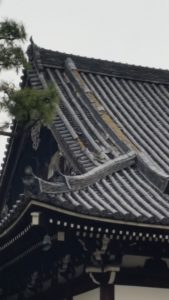
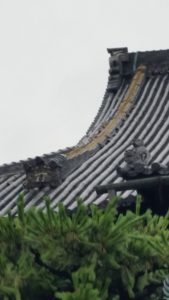
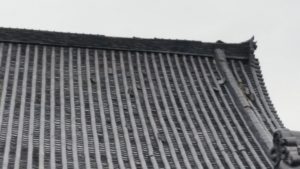
On Monday, of this week, we finally made the journey to the Iwatayama monkey park at Arashiyama, which we had put off until I was capable of climbing up to the top of the hill where the monkeys live. It was a lovely day, high 20s (which I like best) and a bit overcast, so the sun wasn’t biting too much. The walk up is a bit strenuous, but it is through wooded areas and there are some seats along the way for those who need to do it in stages. I was surprised how well I did, given the six weeks of minimal activity I had just been through.
The monkeys are a wild troop, just as they are at Yudanaka in Nagano prefecture, which we visited in 2011. There aren’t as many in the Arashiyama troop (around 170), but still enough that you get to see plenty of activity and different behaviours. When we arrived at the top section, there were two macaques engaging in one clearly recognisable behaviour, much to the amusement of onlookers. Interestingly, they were engaging in the behaviour at very short and regular intervals, following a loud screeching noise from the female (which we assumed meant “ok, again”). Both were visibly exhausted, but continued engaging in the behaviour the whole time we spent looking around the park. I don’t know if this is usual ‘engaging in the behaviour’ conduct for macaques, I couldn’t find any information readily available on the internet about it.

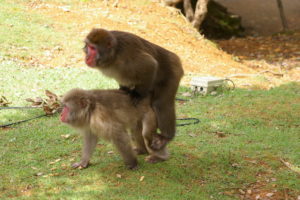

Unlike visiting the troop at Yudanaka, visitors can feed the monkeys at Arashiyama but they have to buy the appropriate feed and then they have to go into a cage and pass the food out to the monkeys. I found it quite appropriate seeing the people on the inside of the cage and the monkeys outside watching them!! It is definitely worth the walk up to see the monkeys and to experience the behaviours (all of them!) of a wild troop. It is important to remember that they are wild animals and you must observe the rules about interacting with them, even though they are acclimatised to humans being there. The other positive about going up to the top of the park is the view of Kyoto you get from there.


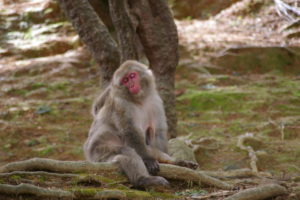
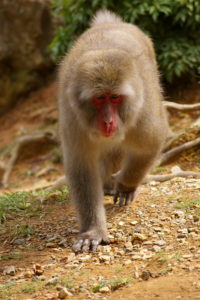

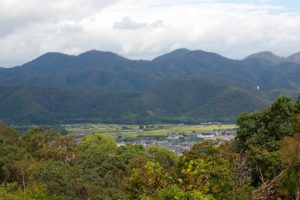

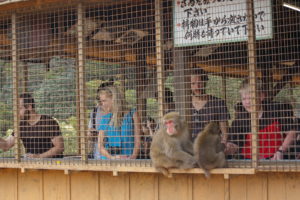
Returning to the typhoon commentary, we saw many trees which were snapped in half around the area and some light poles which were bent over. The human cage building had also sustained some damage to the roof, but luckily it came out relatively unscathed. Also damaged by the winds was the famous bridge over the Ooigawa/Katsuragawa (same river, the name changes after the bridge), where the railing on the Katsuragawa side is broken and collapsed.
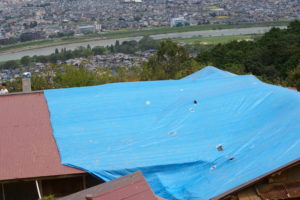
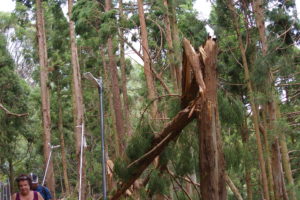
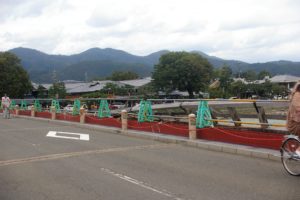
One thing I thought you might be interested in, before I sign off, is our recent visits to the dentist here. It all started when I was testing some toffee that we were making as part of a birthday dessert for a guest, which turned out to be stickjaw toffee and I broke a tooth on it…☹. Luckily we were able to find a dental surgery where someone spoke some English, because neither of us had learnt any language about caries, fillings, dental care etc.
Anyway, we are both part of the national health scheme here, which is available to all those who live here, and standard dentistry is covered in this scheme. On the first visit, x-rays are taken of your teeth, along with photos, then you get a general check up and a clean. All of this for ¥4,280!!! Since that time, I have had a number of visits, as they found a few small caries and they are now working on getting my teeth in order and my gums as perfect as is possible.
The fillings cost ¥1,900 each and a clean is only marginally more than that. I am also going through the process of getting a crown to replace the missing tooth. I can have a metal one basically free as part of the scheme, or if I want one that looks like real teeth, then it is going to cost what I suspect it would cost in Australia. They are very gentle in everything they do, including the hygienist, which is good since I have a bit of a phobia about dentistry. Even the injection is more ‘friendly’ here, playing the tune to When You Wish Upon a Star, as the dentist is using it!!!
Well, that’s all for now – cheers😊.
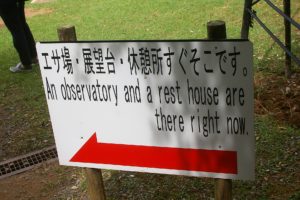
Only now? Where are they normally?
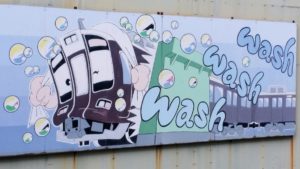
Trains expand in the wash…
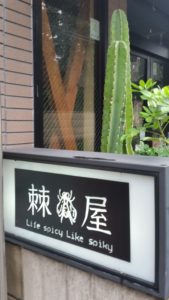
??? Is that Spiky behind? Is Spiky spicy?

There are even Halloween toys for animals!
 on tv
on tv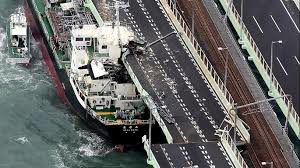
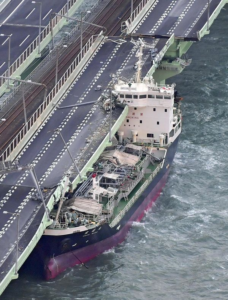
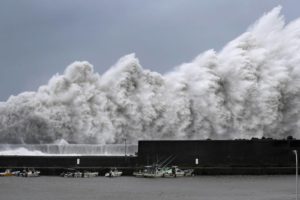

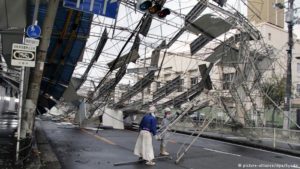
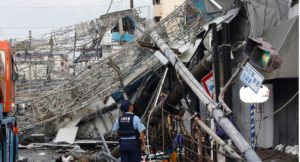
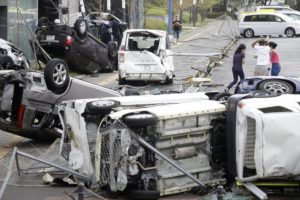
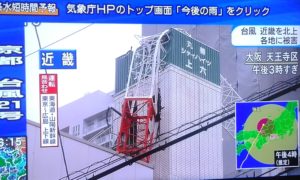
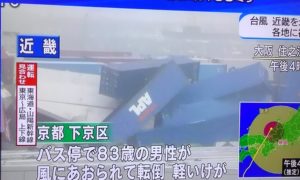
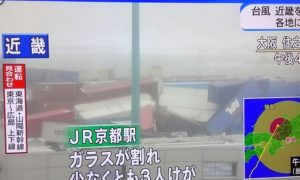

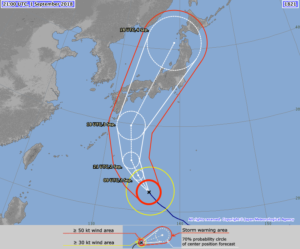
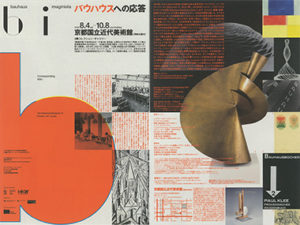
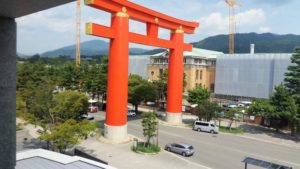
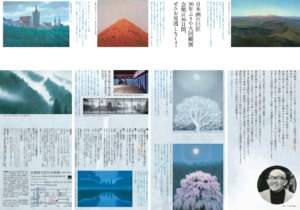
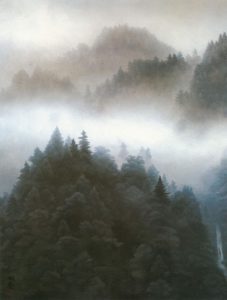
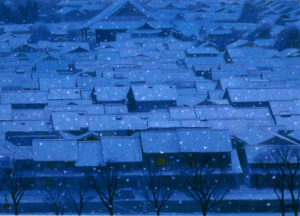
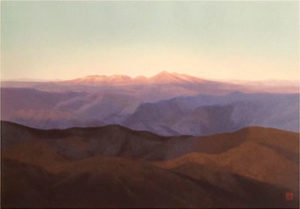
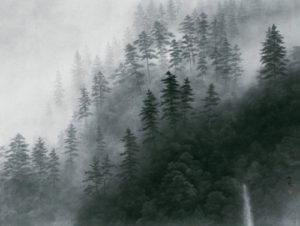
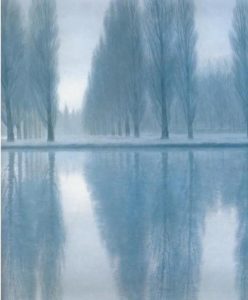
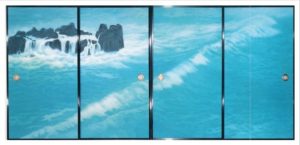
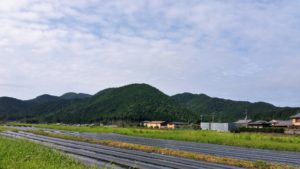
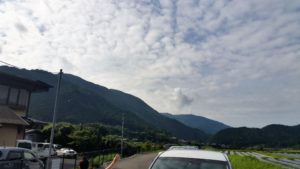
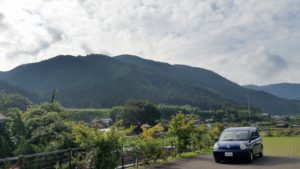
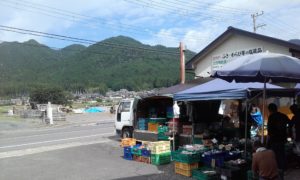
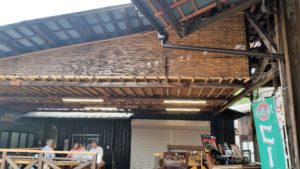
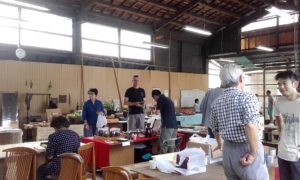
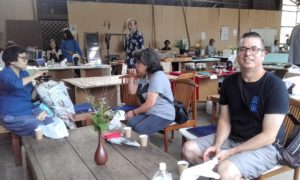
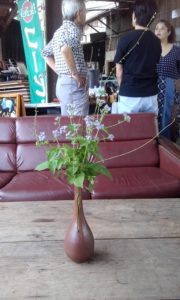 Simplicity
Simplicity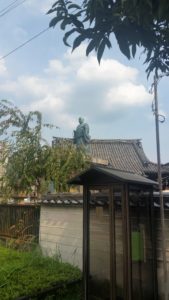 What is that thing in front of the wall for???
What is that thing in front of the wall for???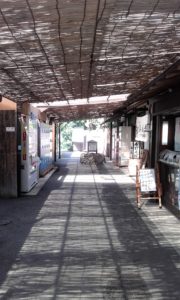 The local bus station at Ohara
The local bus station at Ohara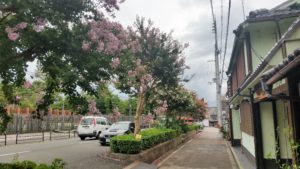 Crepe Myrtle time
Crepe Myrtle time